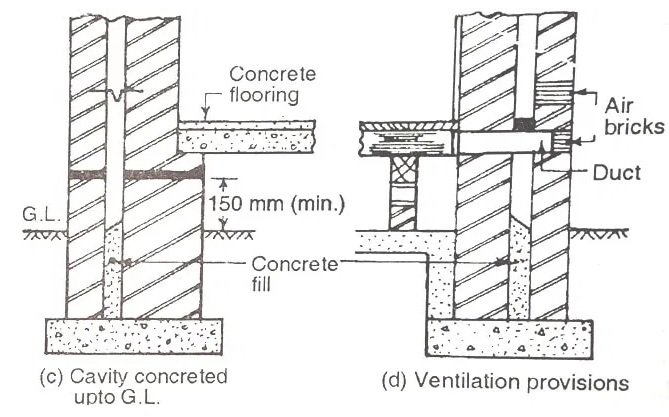What is Cavity Wall?
A cavity wall or hollow wall is constructed with two separate walls called leaves-or skins with a cavity gap or space in between two walls. Both walls are joined together by metal ties. (see figure below)

The primary purpose of the cavity wall is to provide better insulation in the building. It also protects the building from dampness. The main disadvantage of the cavity wall is that cost of construction is very high compared to the traditional cavity wall. It requires more skilled workers.
Construction details of Cavity Wall
To construct a cavity wall, there is no need to provide a foundation. A strong concrete base is sufficient to construct a cavity wall. Two walls are constructed like normal masonry. There must be a minimum cavity space between the two walls. This cavity can be filled with concrete with some slope at the top to some centimeters above the ground floor level.

For external leaf weep holes are provided with an interval of one meter. Normal brick for internal leaf and facing brick for external leaf are used to construct the cavity wall. Both leaves are joined together by metal ties.
Advantages of Cavity Wall
- Cavity wall provides thermal insulation. Due to the space between two walls, the transmission of heat reduced.
- It protects the building from dampness and moisture can not enter the building.
- The cavity wall works as a sound insulator.
- They are more economical compare to the solid wall.
- Reduce weight on the foundation of the structure.
- There is no efflorescence on the outer surface of the wall.
Disadvantages of Cavity Wall
- In some areas insulation material is not easily available, this can boost the cost of the cavity wall.
- Extra precaution required to construct the cavity wall.
- It decreases the carpet area efficiency.
